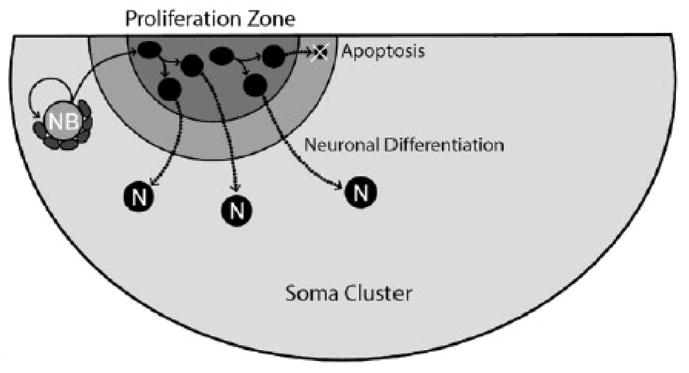Figure 10.

Schematic representation of the cellular basis of adult neurogenesis in the olfactory midbrain of Panulirus argus. Large putative adult neuroblasts (NB) in the vicinity of proliferation zones act as primary neuronal stem cells. By rapid asymmetric cell divisions they self-renew and generate daughter cells that migrate into the proliferation zone and there divide once symmetrically on a much slower time scale. After this mitosis, both daughter cells are pushed out of the proliferation zone and either differentiate into neurons (the vast majority) or die by apoptosis (very few). In essence this process resembles closely neurogenesis in the nervous system of embryonic and larval crustaceans and insects, where large neuroblasts undergo a series of asymmetric divisions in which they self-renew and generate smaller ganglion mothers cells, which in turn divide once symmetrically generating two neurons. One significant difference is that the putative adult neuroblasts (NB) are associated with specialized cellular aggregates that likely are critical for their unusual life-long capacity to self-renew and proliferate. (Image and legend adapted from Schmidt, 2007; request for permission to reprint is pending with John Wiley and Son, Inc.).
